Despite storm related disasters that have broken and uprooted trees, the general health of the garden is good and the mental state of the gardener is as good as ever. Through much of August and into September rainfall has been more regular and heat has not been so extreme as earlier in the summer.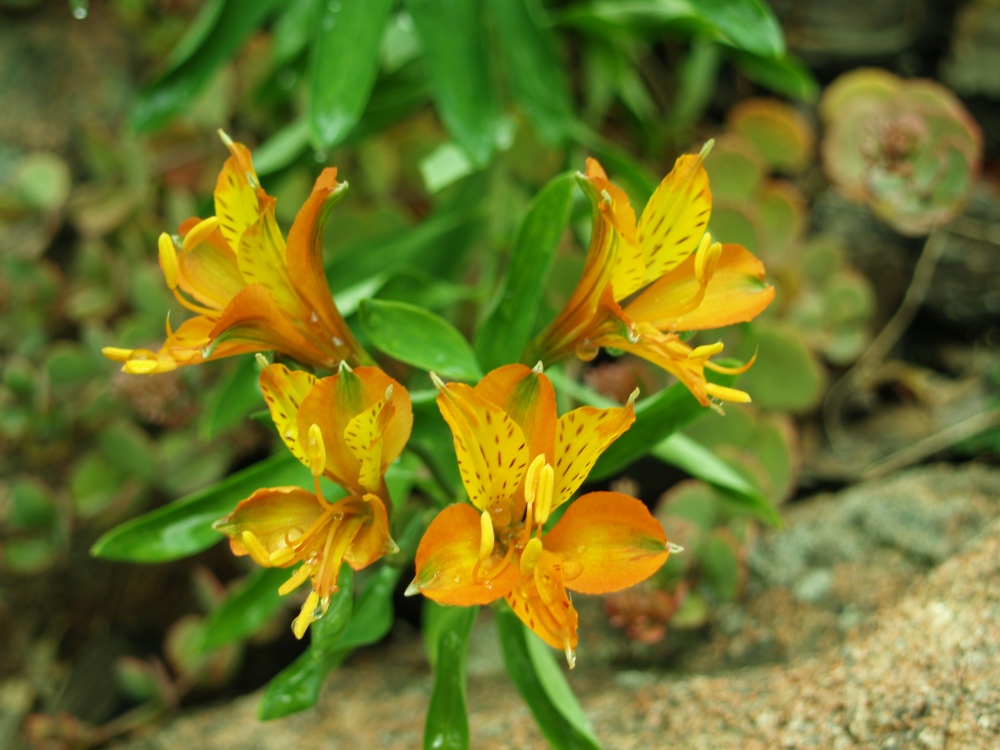
At the time when trees and limbs were strewn about (and days of work with the chainsaw were required) I was quite distressed. It was hot, there was much labor ahead, and until I took a few moments to relax it seemed that there were few blooms. But, there they were, and each day revealed more flowers as the limbs were cut into manageable pieces and the garden was tidied up (at least to its usual standard of disarray).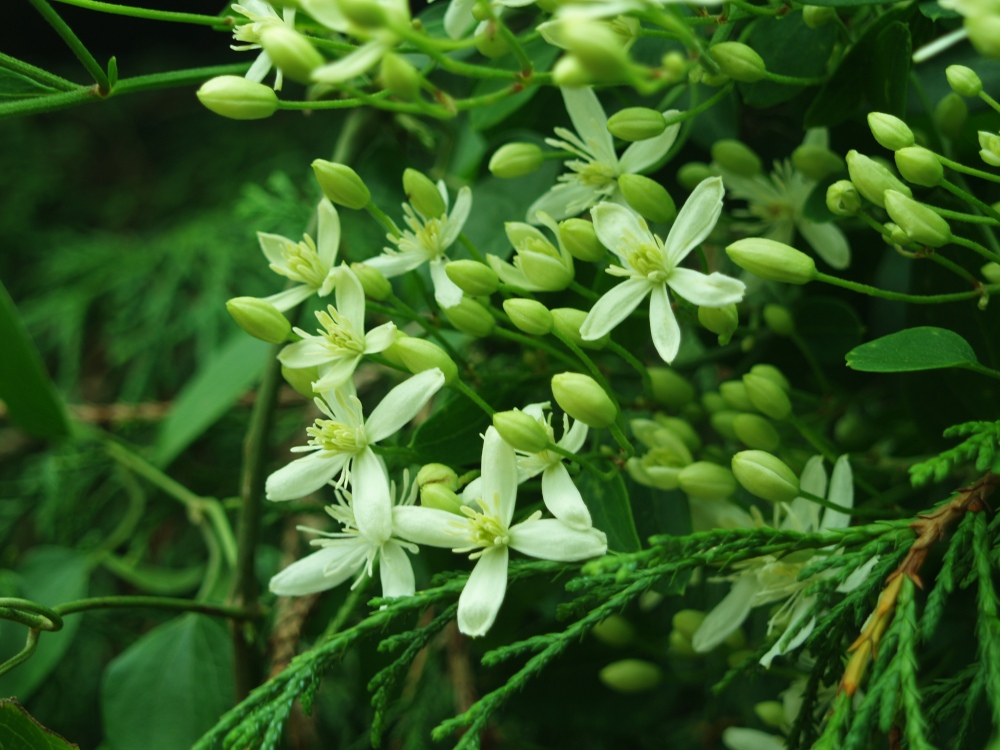
September is often a delightful month, with the relief of cooler temperatures and lower humidity, and with autumn flowering azaleas, butterfly bushes, and blue mist shrubs flowering prolifically. The sweet autumn clematis (above) is nearly at its peak bloom, and again I have not pulled the vine out of the tall threadbranch cypress as planned. The idea from the start was for the fast growing clematis to grow along the cast iron fence that borders the garden along the driveway, but that is perhaps a bit too shaded a spot so the clematis jumped up into the cypress.
With some dedication I’m certain that I could discipline the fragrant clematis to wind through the fence, but I’m less convinced that I have the energy or the will to keep after it. I am at heart a low maintenance gardener (lazy), stuck in a high maintenance garden, so compromises must be made. Not every battle can be waged, so I must pick the ones that are easiest to win and then a few that can be fought to a draw. So, the clematis is likely to stay where it is, and in fact it seems not to be much of a bother to the cypress.
The beautyberries (Callicarpa) are approaching their peak, when arching branches are lined with abundant purple or white berries. The small white flowers that precede the berries are unremarkable (as is the foliage), and the general manner of the shrub is coarse and best suited for the back and sides of the garden where it can be ignored for most of the year. Two wide spreading shrubs and a few seedlings are tucked between the forest and several large western cedars so that the beautyberries are enjoyed only when the effort is made to walk the path to see them.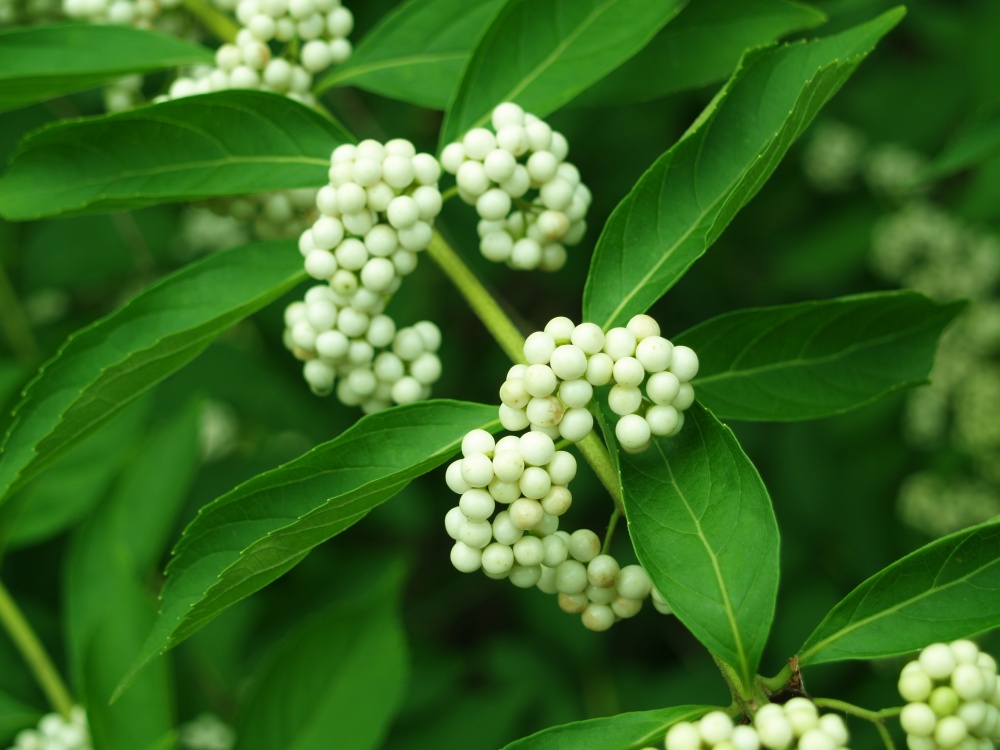
The large maple-like foliage of yellow waxy bells (Kirengeshoma palmata, below) lends a tropical feel to the garden, and must be displayed where it can be frequently appreciated. It is best planted where the soil is a bit damp, but not too wet. I’ve planted one small clump in a shaded spot where summer rains saturate the soil, and another where the ground is quite dry.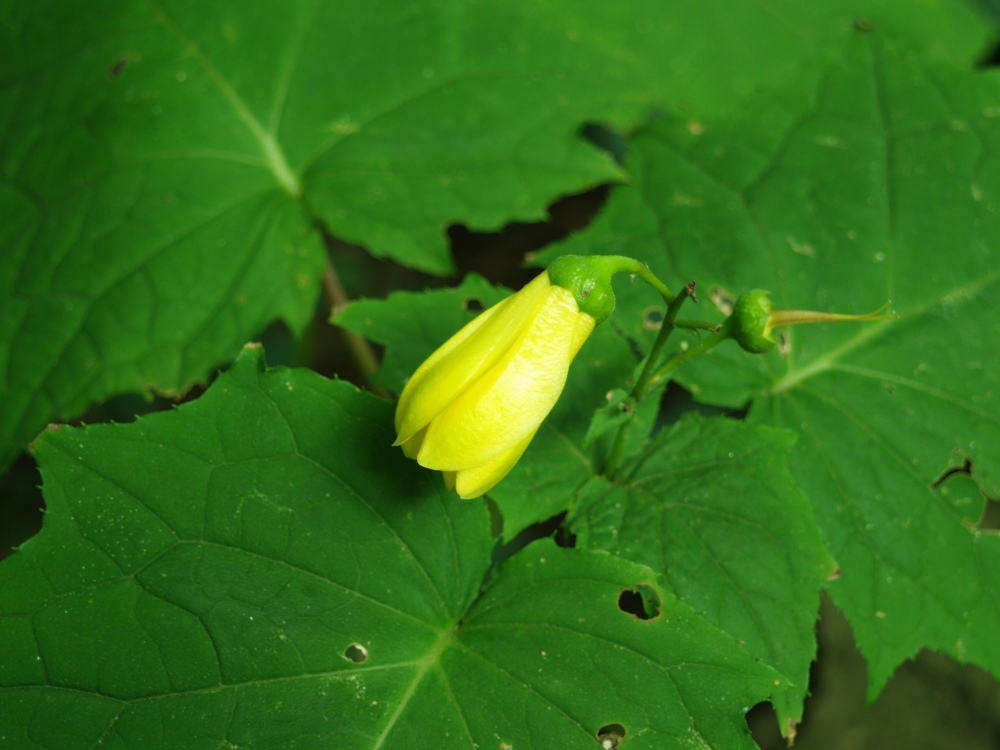
In mostly dry soil beside large leafed hostas and a sprawling Japanese hydrangea vine (Schizophragma hydrangeoides ‘Moonlight’) that meanders along the ground with only one post to climb, waxy bells alternately grows lushly and wilts when ground moisture is low. A year ago I was afraid I had lost it in a prolonged period of drought, but this year it is as good as ever, and just finishing flowering.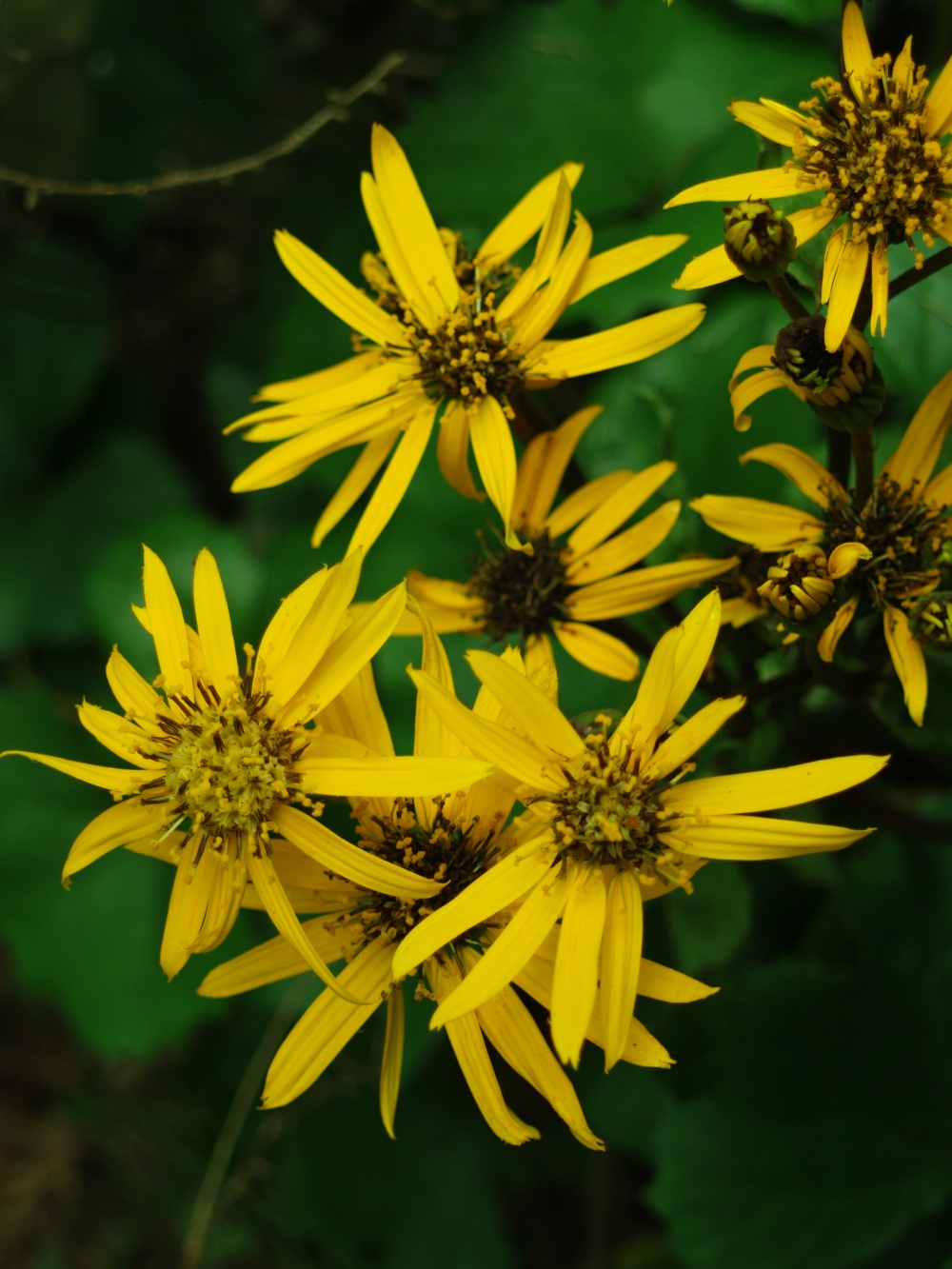
The dark leafed ‘Othello’ ligularia (Ligularia dentata ‘Othello’, above) is planted beside the uppermost pond in the rear garden where little attention is paid to it until it begins to flower in late summer. Despite its proximity to water the surrounding soil is also quite dry as a consequence of neighboring Japanese maples and a pendulous branched Atlas cedar that is perilously close to death due to encroaching shade. Though the spot is shady there are afternoons when the entire ligularia collapses in a heap, only to perk up when temperatures cool slightly in the evening. With a bit more ground moisture it doesn’t suffer these bouts, and from mid August into September the black centered yellow daisy-like blooms are quite welcome.
I’ve planted other ligularias in more obvious spots so that I could better enjoy the foliage, but they can be a bit persnickety getting established in either wet or dry soils. It’s better to be consistently damp rather than alternately wet and dry, and certainly ligularias will have trouble without adequate moisture.
There’s much else of interest in the late summer garden, but today is short on time and space, so the rest will have to wait for another day.